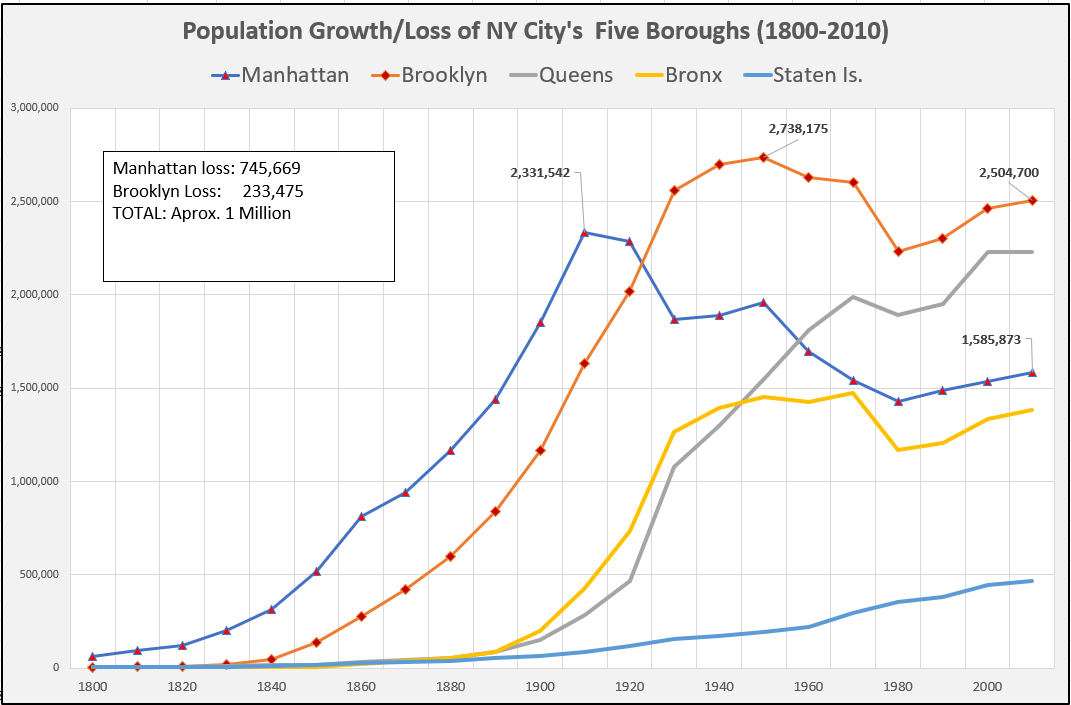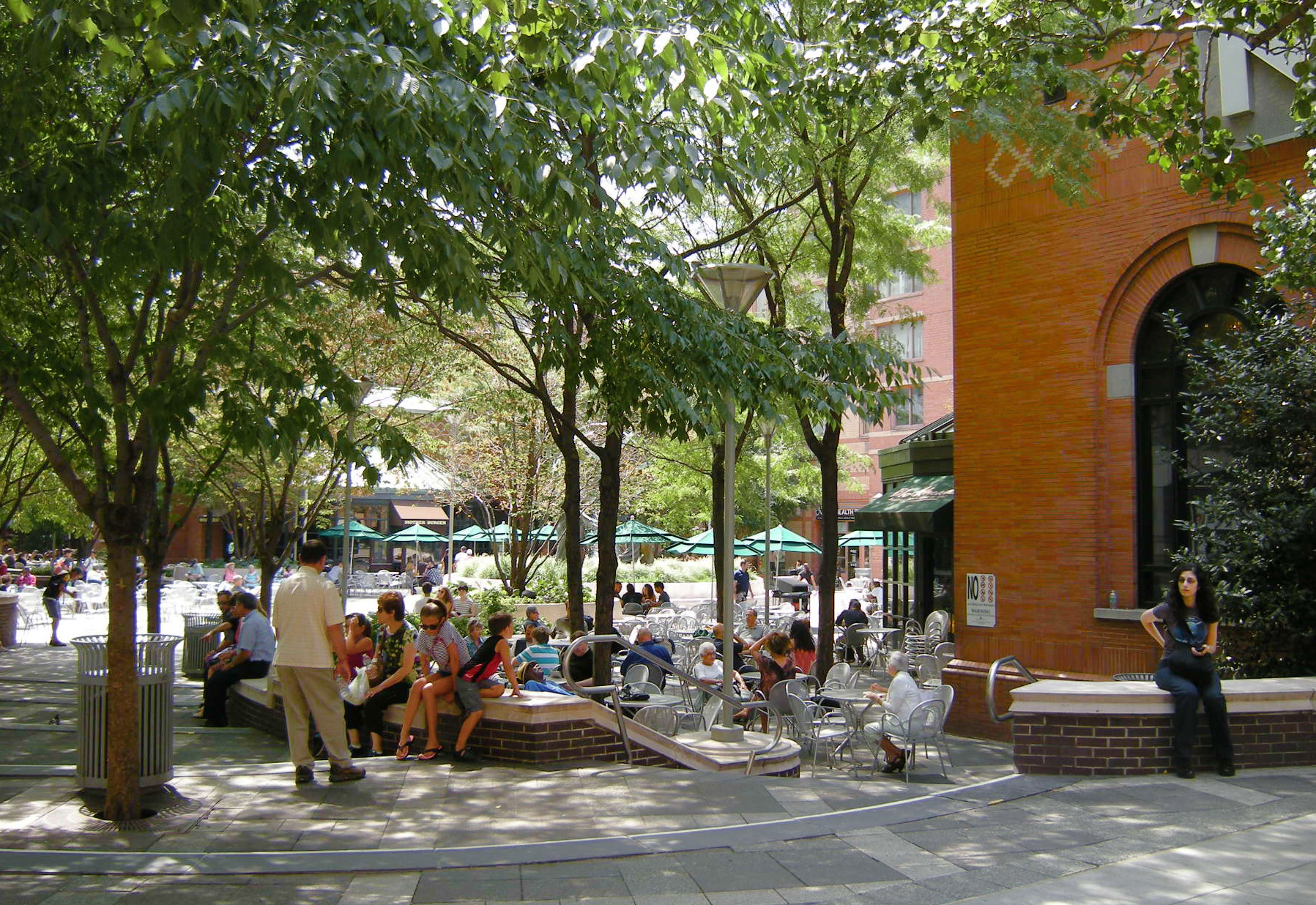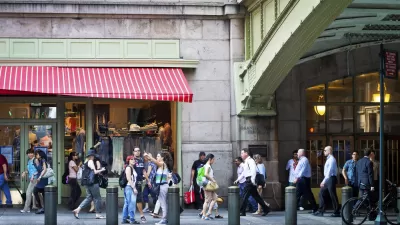Perceptions of what makes density either "good" or "bad" have shifted over the years, and the pandemic is likely to precipitate another shift.

Observing and writing 20-some years before the oil embargo (1974) and 30 years before the stern Brundtland report (1987), Jane Jacobs (1961) resolved that density comes in "good" and "bad" varieties. That temporal distance from two of the tectonic events of the 20th century was inescapably reflected in Jacobs's assessment: "Good" density was unrelated to fuel consumption, or "climate change"; "good" was a social and an urban life-quality yardstick spanning the range between "liveliness, vitality" and the "Great Blight of Dullness" as well as between "concentration" and "overcrowding." Jacobs shed light on ways that concentration (aka density) could generate liveliness, conviviality, diversity, safety, and economic vitality—not on its potential for reducing CO2 emissions. The recent painful event, a massive viral infection that has drained all liveliness from cities, implicates concentration and, as a result, the "density debate rages alongside the pandemic."
Why the rage? This piece explores probable causes and also views on the issues that surround the debate's principal trigger—density.
The apparent general cause is the search for and attribution of culpability for death—a loaded task. In the virus case, the link to planning is arguably indirect and this circuity raises doubts, which heighten the debate’s tenor. Its roots, however, lie in a takeover.

A Friendly Takeover
City planners, architects, and transportation experts embraced Jacobs’s unequivocal and hopeful "urban" message and, as the climate-change issue overtook the city planning field with fierce urgency, combined the emissions reduction issue with her influential exposition, now tagged "urbanism." This newborn conceptual amalgam “urbanism plus environmentalism” expectedly acquired undeniable moral authority; after all, humanity’s survival was at stake. Driven by such compelling duty, researchers looked for, and found, evidence that “bad” density contributes inadvertently to the planet’s demise and to a decline in the wellbeing of its inhabitants. Onwards from that unsettling assertion, research outcomes are slotted as: “urbanist” or “anti-urbanist” and, invariably, “right” and “wrong” or, alternatively, "objective" and "biased." The "urbanism" movement casually subsumed the environmental imperative and hence took an adjudication role.
With the merger complete, the outcome is a sustained rage. Rage between -isms of all stripes and from all corners: suburbanism, liberalism, big-brotherism, urbanism, modernism, anti-gigantism, back-to-earth-ism etc. etc. with their mutually suspect moral or intellectual shortcomings: A weighty mantle adorns all discussants, replete with intolerance and covert patronizing.

Urbanization and Urbanism
"Urbanization" can be easily grasped: People move to cities, and cities grow (Fig. 1). The forces propelling this move and the resulting, often chaotic, settlements have largely been understood. As Jacobs intuited in 1969 (simplified by C. Abrams): ”Import and export or die.” And, invariably, “produce!” (or work), the strongest appeal of cities. Economic activity sustains their growth and survival. It also boosts collective and personal wealth and expands choice; all irresistible tendencies.
"Urbanism" by contrast is elusive; impossible to trace its historical progression using actual city examples. It evokes a desirable end state (as in "egalitarianism") but lacks the active or descriptive forms (as in "urbanize" and "urbanized") that capture process and final outcome. Due to this vagueness, it has spawned numerous personas: "60 urbanisms" each encapsulating either a process (i.e. "Tactical Urbanism" and "Guerrilla Urbanism") or outcomes (i.e., "Agricultural Urbanism," "Neotraditional"). However, the one recurring, stable component of all “urbanisms” that can be traced historically and measured accurately is density, hence the persistent focus of current debates on the subject. S. Handy (2017) made a forceful case for its centrality in achieving environmental goals: “Compact development cannot reduce driving very much on its own, but we cannot reduce driving very much without it.”
Is There a 'Bad Density'?
The urban project, with density as its focus, advances in earnest. Not the project of urbanization, which proceeds organically with mathematical inevitability (Fig.1), but the project of urbanism, which needs to be brought about with concerted, conscious effort. Urbanization is circumstantial, collateral, bottom up, and messy, while urbanism would be largely intentional, deterministic, orderly and rule-bound, and, consequently, programmatic.
The urban project would inject purpose into urbanization: First and foremost, reduce its impact on climate change, but also reduce inequality, enhance opportunity, and improve health outcomes. It would create the good town, the convivial city, the exciting metropolis, and, perhaps, even a just society. Simple, profoundly inspiring, emotionally engaging, and entirely ahistorical (see the UN's 17 Sustainable Development Goals).
To achieve such goals, Jacobs mused about density: "I should guess, roughly, that it is apt to hover at about 200 dwellings to the net acre" (page 217, 1961). A prime example of the good city was Greenwich Village of the 1950s, that she praised profusely. It had a density of 381 p/ha (154 per acre). (Densities in the article are given in people per hectare (and acre) to be consistent with the data sources.)

Evidently, Greenwich Village (Fig.3) experienced wide swings in density: tripling from 1900 to 1910, then falling stepwise to less than half of the 1910 mark and almost doubling again in the next ten years. Neighboring West Village had at the time (1950), and now, only two thirds of its neighbor’s density (246 vs 381 p/ha). All five neighbourhoods, most remarkably the East Village and the Upper West Side, experienced fluctuations. The latter had almost twice the density of Greenwich in the ‘50s (706 vs 381 p/ha). Fluctuations, variability and impermanence permeate these five; these are typical attributes of all 22 neighbourhoods.
Two main questions about density arise from this limited historical tableau: Are all these densities from the extreme high (1323 p/ha) of East Village and lows of Greenwich (201 p/ha) “good” or only a select number of them and, if the latter, which? Are there any upper or lower bands of density that are "bad" and, again, which?
These questions remain open. But what can be distilled from the fluctuation and wide range is an insight that Manhattan (and cities in general) can be viewed as large ecosystems that contain many microsystems, each adapted to a range of local conditions (a port, a park, a square, a thoroughfare and so on) that shape its density and other characteristics. The city then appears more like an organism than a malleable artifact, just as Jacobs implied (page 433, 1961).
The second question, central to this discussion, is whether density can be deliberately commandeered to upper or lower levels (an order of magnitude apart!) or whether densities are a collateral outcome of urbanization acting in tandem with other conditioning variables. Is there a known top-down process or system ultimately capable of inducing specific density levels district by district? This quick historic recount suggests that density ranges represent bottom-up choices not top-down interventions.

If "bad" population density is hard to frame, an unambiguous "good" density with a clear upper threshold does exist, yet it rarely enters the discussion of the good city—job density per employable population. It gives a city its livelihood and liveliness but remains invisible—just a number—hence it receives only perfunctory mention as a planning topic. A jobless city is a ghost city, just like a city under viral quarantine.
Intermission: Manhattan and Paris
Comparing paragons of density and “urbanism” sheds light to the question of programmatic density planning: Manhattan and especially Paris are generally acknowledged as supreme examples of urbanism. Ideas like “the more strangers the merrier” (Jacobs page 40,1961) and "bumping into each other" generally serve as a casual placeholder definition of “urbanism” (not Jacobs’s term.)
Residents may have a different perception. Significantly, Manhattan, the densest borough of New York City, shed nearly 700,000 people since 1910. So did Paris (663,000) in roughly the same period. Both figures surpass the entire population of many U.S. cities (e.g., Portland), Lyon of France, and imperial Rome itself. Put simply, Manhattan and Paris each shed an entire city from their respective densest districts. The causes of this outflow are partially understood and a matter of speculation. What's relevant here, is that these outflows were spontaneous, not induced or regulated. This points once more to the city as a self-organizing complex-system. Figure 5 shows that Paris’ uncontested "urbanism" registers densities at the district scale that are consistently lower than those of Manhattan and, arguably, sufficient to achieve its status.

The Crux
We witnessed the unstoppable process of urbanization and the resulting city growth. We also saw that, in this process, districts within cities gain or loose populations, gain or loose density and, similarly, change land uses; as a result, their density and diversity fluctuate. It appears that internal factors, such as social tensions, income disparities, and property values, among others, trigger these changes. External influences also play a part. These emerge unpredictably: new modes of transport and communication, novel manufacturing and building technologies, and demand for labour—from manual to managerial.
None of these changes and the forces that induce them are commandeered—they are dispersed, uncoordinated initiatives attributable to thousands of individuals seeking, finding, and making personal life choices. One universal choice is the amount of space that each individual consumes: from cramped to abundant. Taken together, these choices shape the city and its densities. Densities have and will always fluctuate temporally and geographically.
At any population density, however, people need to and do make direct contacts. These can be either utilitarian (a transaction), altruistic (helping out), or pleasurable (amusements), some obligatory others discretional. Discretional contacts can be reduced and replaced in an epidemic setting. The one direct contact that cannot be reduced without risking a city’s very existence is reporting for work, the fundamental reason why people gravitate to cities in the first place.
And therein lies the crux. To survive and flourish, a city must work: produce, import, and export. Work invariably necessitates direct contact, so providing a livelihood in a viral environment becomes a threat to life. Families that have at least one provider, no matter where they live or at what density, have, consequently, a potential vector in both directions. To sidestep work and focus on population density as a cause of or defense against virus spread is, at best, pointless chatter. If a city is at work, so is the virus.
Planners have learned this lesson before. A fierce debate erupted after 9/11 about the need for and benefits of tall buildings, only to subside in acquiescence to be followed by an oversupply of such buildings. The same will happen after Covid-19 regarding population density; it will follow its organic evolution, whatever the talk.
Fanis Grammenos is the director of Urban Pattern Associates in Ottawa, Ontario and the author of Remaking the City Grid: A Model for Urban and Suburban Development (i.e., the Fused Grid). Reach him by email with questions or comments.

Planetizen Federal Action Tracker
A weekly monitor of how Trump’s orders and actions are impacting planners and planning in America.

Maui's Vacation Rental Debate Turns Ugly
Verbal attacks, misinformation campaigns and fistfights plague a high-stakes debate to convert thousands of vacation rentals into long-term housing.

Restaurant Patios Were a Pandemic Win — Why Were They so Hard to Keep?
Social distancing requirements and changes in travel patterns prompted cities to pilot new uses for street and sidewalk space. Then it got complicated.

In California Battle of Housing vs. Environment, Housing Just Won
A new state law significantly limits the power of CEQA, an environmental review law that served as a powerful tool for blocking new development.

Boulder Eliminates Parking Minimums Citywide
Officials estimate the cost of building a single underground parking space at up to $100,000.

Orange County, Florida Adopts Largest US “Sprawl Repair” Code
The ‘Orange Code’ seeks to rectify decades of sprawl-inducing, car-oriented development.
Urban Design for Planners 1: Software Tools
This six-course series explores essential urban design concepts using open source software and equips planners with the tools they need to participate fully in the urban design process.
Planning for Universal Design
Learn the tools for implementing Universal Design in planning regulations.
Heyer Gruel & Associates PA
JM Goldson LLC
Custer County Colorado
City of Camden Redevelopment Agency
City of Astoria
Transportation Research & Education Center (TREC) at Portland State University
Jefferson Parish Government
Camden Redevelopment Agency
City of Claremont





























